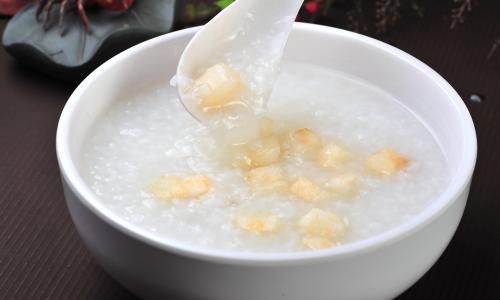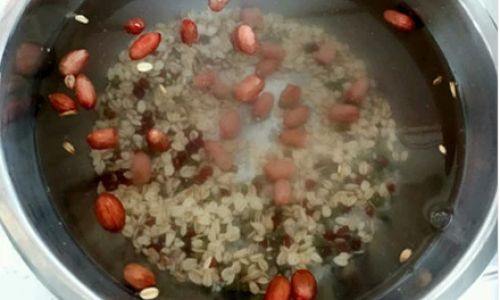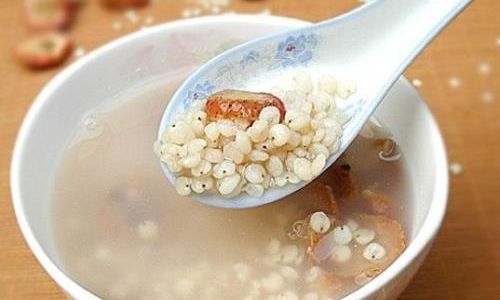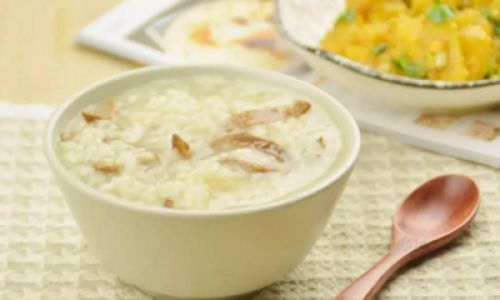Table of content
- 1 Oats: The Quick vs. Slow Debate
- 2 Rice: From Sticky to Savory
- 3 Millet and Quinoa: Gluten-Free Alternatives
- 1 Stovetop: The Classic Approach
- 2 Slow Cooker: Set-It-and-Forget-It Convenience
- 3 Instant Pot: Speed Without Sacrifice
- 4 Microwave: The 5-Minute Fix
- 1 Burnt Bottom
- 2 Watery Porridge
- 3 Lumpy Texture
- 1 Chinese Congee (Jook)
- 2 Mexican Atole
- 3 African Pap
- 1 Overnight Refrigerator Oats
- 2 Freezer Prep
- 3 High-Speed Blender
Porridge, a humble yet versatile dish, has nourished civilizations for millennia. From the hearty oatmeal of Scotland to the silken congee of Asia, this comforting meal adapts to countless cultures, ingredients, and preferences. Yet, for all its simplicity, achieving porridge perfection hinges on a critical variable: time. How long should you simmer your grains to unlock their creamiest potential? The answer depends on myriad factors, from the type of grain to the cooking method employed. This article delves into the science and craft of porridge-making, exploring optimal cooking times for diverse ingredients and techniques. Whether you’re a time-strapped morning commuter or a leisurely weekend cook, understanding these timelines will transform your bowl from mundane to magnificent.
The Foundation: Grain Selection and Preparation
Before timing begins, grain selection lays the groundwork for success. Oats, rice, millet, quinoa, and cornmeal each demand unique approaches.
1 Oats: The Quick vs. Slow Debate
- Rolled Oats (Old-Fashioned): These flattened oats cook in 5–7 minutes on the stovetop. Their pre-processed nature allows rapid absorption of liquid, making them ideal for weekday breakfasts.
- Steel-Cut Oats: With minimal processing, these chewy gems require 20–30 minutes of simmering. Their robust texture rewards patient cooks with a nutty flavor profile.
- Instant Oats: Pre-cooked and dried, these variants cook in under 2 minutes but often sacrifice texture for speed.
Pro Tip: Soak steel-cut oats overnight to reduce cooking time by 5–10 minutes without compromising structure.

2 Rice: From Sticky to Savory
- Short-Grain Rice (e.g., sushi rice): For creamy congee, simmer 1 part rice to 8 parts water for 1.5–2 hours. The starch release creates a velvety base.
- Long-Grain Rice (e.g., basmati): Less starchy, requiring 15–20 minutes for a fluffy porridge. Ideal for savory preparations with spices or vegetables.
3 Millet and Quinoa: Gluten-Free Alternatives
- Millet: Toast first for depth, then simmer 15–20 minutes in a 1:3 grain-to-liquid ratio.
- Quinoa: Rinsed to remove bitterness, cooks in 12–15 minutes. Its protein-rich structure suits both sweet and savory bowls.
Cooking Methods: Timing Techniques for Every Kitchen
The appliance you choose alters cooking dynamics. Stovetop, slow cooker, Instant Pot, and microwave each impose distinct timelines.
1 Stovetop: The Classic Approach
- Active Monitoring: Requires stirring to prevent sticking.
- Timing:
- Oats: 5–30 minutes (varies by type).
- Rice: 15–120 minutes (congee vs. pilaf-style).
- Grits/Polenta: 20–40 minutes for creamy results.
Expert Advice: Use a heavy-bottomed pot to distribute heat evenly, reducing hotspots.
2 Slow Cooker: Set-It-and-Forget-It Convenience
- Low Heat Magic: Ideal for overnight cooking.
- Timing:
- Steel-cut oats: 6–8 hours on low.
- Rice congee: 4–6 hours on high or 8–10 hours on low.
- Benefit: Enhanced flavor development as grains meld with aromatics.
3 Instant Pot: Speed Without Sacrifice
- Pressure Cooking: Seals in moisture while accelerating cooking.
- Timing:
- Steel-cut oats: 10 minutes manual + 10 minutes natural release.
- Dried beans/legumes: 15–20 minutes for a protein-packed porridge.
- Caution: Overcooking under pressure yields mushiness; adhere to recommended times.
4 Microwave: The 5-Minute Fix
- Quick Fix: Combine grains and liquid in a bowl, microwave at 1-minute intervals, stirring between bursts.
- Timing:
- Instant oats: 1.5–2 minutes.
- Quinoa: 6–8 minutes (covered).
- Limitation: Prone to uneven heating; stirring is non-negotiable.
The Consistency Conundrum: Adjusting for Thickness
Porridge texture ranges from soup-like broth to stiff polenta. Cooking time and liquid ratios dictate outcomes.

- Thin Porridge (e.g., Lúzhōu chǎo shǔ congee): 1:10 grain-to-liquid ratio. Simmer until grains disintegrate (30–45 minutes for rice).
- Medium Consistency (e.g., Scottish oatmeal): 1:4 ratio. Cook until grains swell but retain shape (15–20 minutes for rolled oats).
- Thick Porridge (e.g., Nigerian ogi): 1:2 ratio. Stir continuously for 25–30 minutes to prevent lumping.
Advanced Technique: Add cornstarch or arrowroot slurry during the final minutes to tighten texture without extending time.
Altitude Adjustments: Cooking at Elevation
High-altitude environments (above 3,000 feet) alter boiling points, affecting starch gelatinization.
- Boiling Point Decline: For every 500 feet above sea level, water boils ~1°F lower.
- Impact on Porridge:
- Longer cooking times required (add 5–10 minutes per 1,000 feet).
- Increased liquid evaporation; monitor closely to prevent scorching.
Adaptation: Use a lid to trap steam and maintain moisture levels.

Flavor Infusion: Timing Add-Ins for Depth
Ingredients like spices, dairy, or fruits should be added at strategic intervals to avoid overcooking.
- Early Additions (0–5 minutes into cooking):
- Aromatics (garlic, ginger, cinnamon sticks).
- Dried spices (turmeric, cumin).
- Mid-Cooking (5–15 minutes):
- Fresh herbs (thyme, rosemary).
- Grated vegetables (carrots, zucchini).
- Final Touches (Last 2 minutes):
- Dairy (milk, cream) to prevent curdling.
- Delicate ingredients (berries, nuts).
Innovation: Toast grains first in butter or oil to unlock nutty flavors before adding liquid.
Troubleshooting: Common Time-Related Pitfalls
1 Burnt Bottom
- Cause: High heat or insufficient stirring.
- Fix: Use a diffuser on stovetop; reduce heat to low.
2 Watery Porridge
- Cause: Insufficient cooking time or excess liquid.
- Fix: Simmer uncovered to evaporate excess moisture.
3 Lumpy Texture
- Cause: Uneven heating or cold liquid addition.
- Fix: Whisk vigorously during cooking; gradually add hot liquid.
Cultural Nuances: Traditional Timelines
1 Chinese Congee (Jook)
- Preparation: Rinse rice until water runs clear.
- Cooking Time: 1–2 hours on stovetop; 4–6 hours in slow cooker.
- Secret: Add a knob of ginger and dried scallops during cooking for umami depth.
2 Mexican Atole
- Grain: Masa harina (corn flour).
- Cooking Time: 10–15 minutes with constant whisking.
- Customization: Infuse with chocolate, cinnamon, or chili for festive flair.
3 African Pap
- Grain: White maize meal.
- Cooking Time: 20–30 minutes; stir continuously to avoid clumping.
- Serving Suggestion: Pair with spicy sambal or creamy milk.
Modern Twists: Time-Saving Hacks
1 Overnight Refrigerator Oats
- Method: Combine oats, liquid, and yogurt in a jar; refrigerate 8–12 hours.
- Benefit: No-cook convenience with texture akin to cooked porridge.
2 Freezer Prep
- Batch Cooking: Prepare large quantities and freeze in portions.
- Reheating: Thaw overnight; add liquid and simmer 5–7 minutes.
3 High-Speed Blender
- Technique: Blend cooked grains with hot liquid for instant creaminess.
- Ideal For: Leftover rice or quinoa.
Nutritional Considerations: Time vs. Nutrient Retention
While cooking time affects texture, it also influences nutrient availability.

- Phytic Acid Reduction: Longer soaking/cooking (e.g., steel-cut oats) breaks down anti-nutrients, enhancing mineral absorption.
- Glycemic Index: Overcooked grains spike blood sugar faster; aim for al dente texture when possible.
Conclusion: The Symphony of Time and Taste
Porridge transcends mere sustenance; it’s a canvas for culinary expression. Mastering cooking times empowers you to tailor each bowl to your schedule and palate. Whether you savor the slow dance of simmering congee or seize the day with instant oats, remember that patience—or its clever substitution—is the secret ingredient. Experiment, adjust, and soon you’ll craft porridge that’s not just cooked, but perfected.
Final Word: The next time you stand at your stove, timer in hand, view those minutes not as a chore but as a dialogue between grain and flame. The result? A bowl that whispers of tradition and nourishes body and soul alike.





0 comments